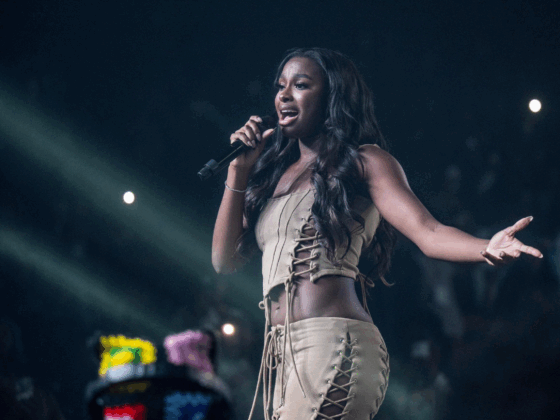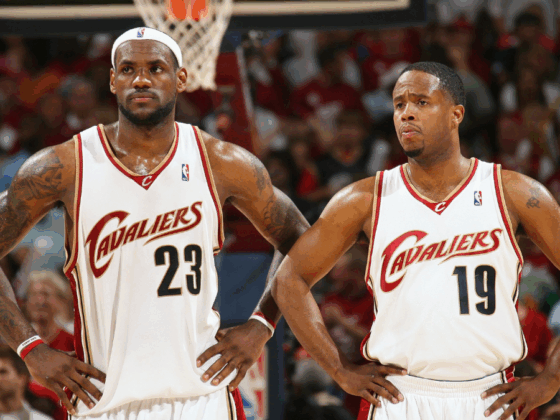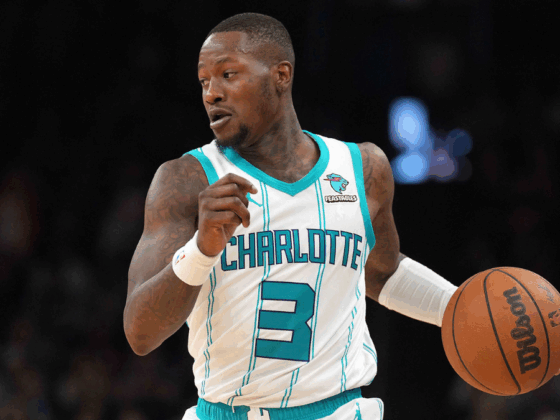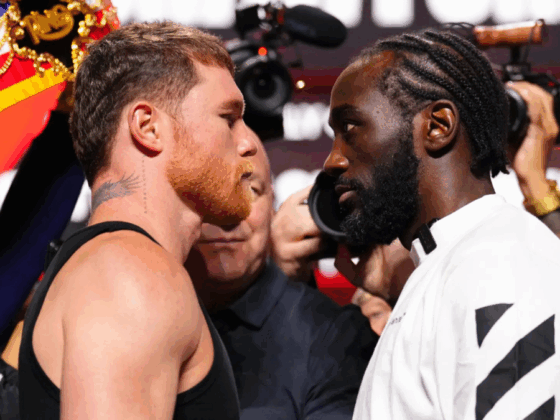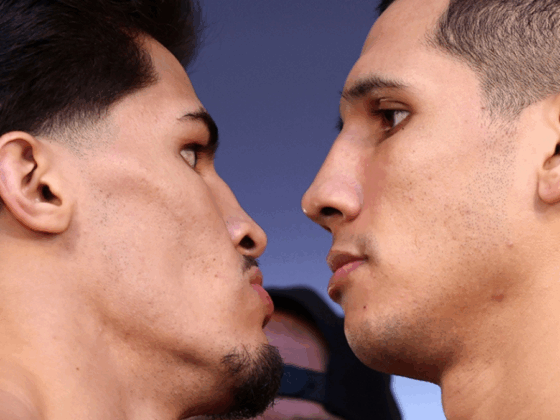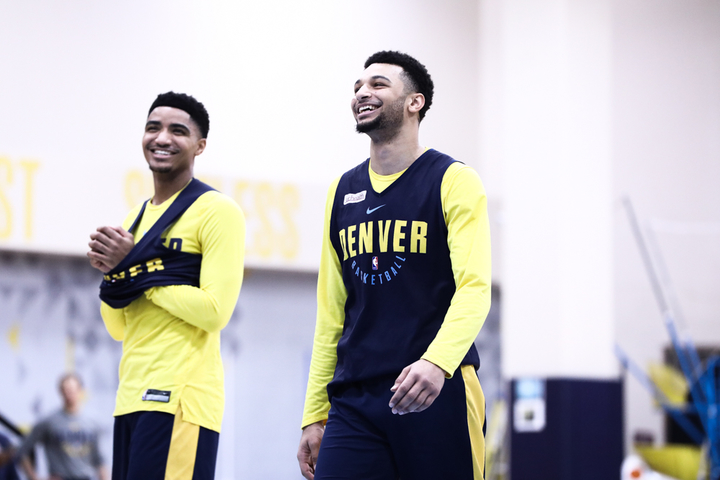
The NBA franchise with the brightest future is nestled in the Rocky Mountains of Denver, Colorado, a mile above its rebuilding contemporaries.
Amid a four-season stretch devoid of postseason basketball, the Denver Nuggets have oscillated between 30 and 40 wins, landing three cornerstone players in the process. None, however, have been top five picks — a tribute to the Nuggets’ scouting abilities and the organization’s capacity to field a semi-competitive roster throughout a rebuild.
Unlike the Minnesota Timberwolves, it didn’t require a splashy offseason trade and the abdication of young talent. Unlike the Philadelphia 76ers, a half-decade of insufferable losing and redshirt seasons from their lottery selections were omitted. Unlike the Phoenix Suns, who began their rebuild at a similar time, Denver has unearthed multiple franchise building blocks in the draft to convey both an auspicious present and future.
Led by a Serb, a Wildcat and a Spartan, the Nuggets hold a blueprint for championship contention: a selfless superstar and two nascent backcourt mates.
Nikola Jokic, Jamal Murray and Gary Harris are the budding nuclei of a Denver squad squarely in the playoff race. All shy of their 24th birthday, the triad has yet to legally share a drink (the 20-year-old Murray is to thank for that), but, despite remaining years away from their prime, has blossomed into a three-pronged brigade capable of burying opposing defenses with a flurry of scores.
Jokic, the 41st overall pick of the 2014 NBA Draft, is the fulcrum of the Nuggets’ offense; the one whose combination of size, talent and vision has rarely graced the NBA kin since Arvydas Sabonis and whose accelerated maturation to stardom gave a previously middling franchise direction.
On offense, he stands perched atop the key, surveying the court and slinging it to cutters or marksmen who flank him on the wing:
In transition, Jokic, a self-proclaimed “fat point guard” in his younger years, barrels down court, 6-foot-10 frame and all, showcasing his tight handle and refined passing:
The Serbian titan holds an affinity for racehorses, having purchased one last winter in his home of Sombor, Serbia, admitting that had an NBA career not panned out, he’d be a stable boy. And in Jokic, the Nuggets have found their own racehorse, hitching their wagon to him in pursuit of the franchise’s first championship.
Offense has come naturally for Jokic and the Nuggets. Following the Joker’s insertion into the starting lineup on Dec. 15 last season, they paced the league in points per possession and through 36 games this year, 20 of which have been without newly-acquired All-Star Paul Millsap, Denver ranks eighth in offensive efficiency, per ESPN.
What’s come less naturally to the inherently reserved Jokic is leadership. But according to Adam Mares of The Denver Stiffs, Head Coach Michael Malone is witnessing growth.
“I think he’s improving,” Malone said at the Nuggets’ practice on Dec. 29. “And I think he’s improving because he’s making a concerted effort to improve. And I think the point that really kind of hit home with him was I told him, ‘Whether you like this or not, whether you think it’s fair or not fair, you are our leader. You are our best player.’ ”
Harris and Murray, both sharpshooting guards, are the complementary pieces. Jokic makes the offense hum, but the wings are integral cogs in crafting a potent attack.
Compounding the enigma Denver’s offense presents for its opponents is Jokic’s growing touch from outside, shooting career highs from beyond the arc (36.4 percent) and 10-16 feet (53.1 percent). Defenders are burdened with the threat of a Jokic pass or jump shot, opening up the key for cutters, drives to the rim and other actions geared toward paint production.
Other times, Jokic, providing a dual role as both a magician and NBA star, spawns baskets out of thin air with flair and wizardry:
The backcourt pairing is thriving alongside their unicorn center, amassing profits from Jokic’s magnetism as a scorer and facilitator:
Prior to Jokic whirling it to Harris in the corner, all five New York Knicks are fixated on No. 15, demonstrating the gravity of his presence inside. Harris is cognizant of the attention directed toward Jokic and migrates from the wing to the vacant corner, serving as an outlet for the big man, and ultimately knocks down an open 3.
It’s as though the Nuggets scanned through Tinder, given the opportunity to handpick — err, swipe right for — the optimal pieces to surround their star as the fourth- and second-year guards, Harris and Murray, are shooting 39.5 and 40.7 percent on catch-and-shoot 3s this season.
And it’s not just Jokic’s dexterous passing that affords Harris and Murray increased opportunities as he ranks 13th in the NBA in screen assists per game at 3.7, harnessing a brawny 250-pound build to spur open looks.
The electric triumvirate of Jokic, Harris and Murray has gradually increased its voltage throughout the 2017-18 campaign, upping their net rating each month of the season (9.3 in October, 9.6 in November, 11.0 in December). On the year, that group’s net rating of 9.8 (111.8 Offensive Rating, 102.0 Defensive Rating) sits 13th in the NBA of any trio who’s eclipsed at least 450 minutes together and averages 18 minutes per contest — outpacing every other engrossing young core (defined here as three players 24 and under).
Much like his running mates in their second seasons, Murray’s game has bypassed the awkward stage of NBA puberty that was his rookie campaign. As a sophomore, he’s showcasing his highly-touted scoring prowess and putting an intricate, seemingly decade-long passcode on the Nuggets’ starting point guard job.
“When we drafted him we realized he had the capabilities of being a true combo guard, play off the ball play on the ball,” Malone told Nuggets Insider Chris Dempsey following Murray’s first-career start at point guard last March. “Even when he’s out there as a point guard, I put the ball in Will Barton’s hands quite a bit to let him play off the ball because he’s just as effective. So, I think that’s the real luxury of having a guy like Jamal Murray; whether he has the ball in his hands or he’s spacing the floor, he’s always a threat.”
Muray echoed those sentiments.
“It’s fun,” Murray told Dempsey. “I’m confident that’s where I want to be. I’m just trying to make the most of it, and trying to learn and forget about my mistakes. Just trying to stay aggressive and observant.”
A season ago, despite playing in all 82 games, the Kentucky product was significantly hampered by a double sports hernia, of which he remained silent about, that made it “hard for [him] to get out of bed most days.”
Murray intermittently hinted at signs of stardom last season, averaging 15.1 points and five assists on 44.9 percent shooting in April. The potential was there, peaking out like a bookmark, but the most important content had yet to be revealed.
Despite mile-high expectations, the Canadian’s speedometer registered at just 40 kilometers per hour (the preferred unit of measurement in Murray’s hometown of Waterloo, Ontario) through the first month, playing in a league that motors along at 60. He averaged 12.1 points, 3.1 assists and 2.4 rebounds, shooting 37.1 percent from the field and a grisly 18.2 percent from beyond the arc.
Those struggles are in the rearview mirror now — but are in fact further away than they appear.
With Millsap sidelined at least through February, Murray has stepped up in the forward’s absence. In December, he averaged 19.1 points, 3.2 assists, 4.3 rebounds and 1.2 steals, posting shooting splits of 46.7/46.4/92.5 and eight games with 21-plus points.
As a spot-up shooter, Murray, nicknamed the Blue Arrow, went supernova from 3-point range during the holiday season, shooting 54.2 percent with a 78.8 Effective Field Goal percentage on nearly four attempts per game. The 6-foot-4 guard is adept at relocating to gaps on the perimeter — attempting 2.9 3s per game with at least 6 feet of space (deemed wide open by NBA.com) in December and converting 56.8 percent of them:
Murray’s December was hot enough to thaw the icy Denver roads and bolstered his 3-point percentage from 25.3 percent to 35.2 percent. And for the year, Murray is averaging 15.8 points, 3.5 rebounds and 2.7 assists, shooting 44.4 percent from the field and 92.2 percent from the line — all of which are marked improvements from his rookie year.
He doesn’t necessarily fit the traditional mold of a point guard, ranking just sixth on the Nuggets in assists per game. But as Denver’s floor general, Murray is economical with the ball, posting a 12.4 percent turnover rate and surrendering the rock just two times per game.
Murray has diversified his scoring portfolio this season, allotting a lesser portion of shots to 3s and attacking the cup for baskets inside. Last season, 47.1 percent of his field goal attempts were from deep, but this season, just 38.7 percent are 3s. That decrease from beyond the arc has been greeted by more shots in the paint as he’s shooting 39.8 percent of his attempts from the previously mentioned region, up from 36 percent last season.
Not only is Murray storming to the cup more frequently, averaging 7.3 drives per game compared to 4.4 last season, but he’s converting those opportunities. A season ago, he shot 50.8 percent in the paint. Now, he sports a 56 percent clip from that area.
Back in training camp, the 20-year-old said he felt quicker and more explosive than in his rookie season. That paucity of physical traits vital to success around the rim was evident on many of Murray’s drives last season, in which he struggled to finish among long-limbed defenders:
This season, Murray is mobilizing better body control inside and varying the speed at which he attacks. He’s grown stronger and craftier and is no longer sapped of quickness or explosiveness, free from the chains of his double sports hernia.
Watch as he shifts gears and darts to the idle paint, protects the ball from defenders (notably the quick-handed De’Aaron Fox) and kisses it off the glass over Willie Cauley-Stein’s 7-foot-3 reach:
A byproduct of Murray’s aggressiveness is increased trips to the charity stripe. He’s averaging 2.9 attempts free throws per game, nearly doubling the 1.5 he shot last season. Furthermore, his free-throw rate has swelled from 16.4 percent to 22.3 percent. With a career mark of 90.1 percent from the free-throw line, Murray should aspire to induce fouls at a Harden-like rate, yielding easy points and furthering his development as a scorer.
Despite incremental improvements in numerous facets of his game, Murray’s path to stardom is littered with hurdles. With Jokic’s polished vision, Murray doesn’t project as Denver’s primary facilitator. But even then, Murray often struggles to create penetration in pick-and-roll sets and forces ill-advised, telegraphed passes instead:
And for all the strides he’s made as a scorer, Murray isn’t much of a threat off the dribble to this point. Pull-up jumpers are his most frequented shots this season, yet he’s shooting just 35.7 percent from the field and 25.8 percent from 3 on those attempts. When he takes at least one dribble this season (rather than zero dibbles), his field goal percentage craters from 51 percent to 43 percent — down from his 43.7 percent mark of last season.
Murray jokingly refers to Harris as the Klay to his Steph, but the parallels are striking. Both Harris and Thompson are marksmen, each shooting over 38 percent from 3-point range over the past two-plus seasons, and improving as off-the-dribble scorers as well. Thompson’s defensive value sprints away from Harris’s, but the physical tools are there for the Michigan State product to become Denver’s version of Thompson.
Harris was glued to the bench much of his rookie year, playing in just 55 games and averaging 13.1 minutes. But in year two, a butterfly, primed to prove its worth, emerged from a cocoon and started each of the 76 games it played.
He averaged 12.3 points, 2.9 rebounds and 1.3 steals, shooting 46.9 percent from the field and 35.4 percent from 3 (up from 20.4 percent in his rookie year). Last season, Harris trimmed the unnecessary fat from his offensive arsenal, reducing midrange attempts while increasing 3-pointers and shots inside the paint to produce 14.9 points per game and a 61.1 True Shooting percentage. He was one of only 10 guards with at least 600 field goal attempts to shoot 50 percent from 2-point range (55.8 percent) and 40 percent from 3 (42.0 percent). The hyperefficient season from Harris landed him a lucrative four-year, $84 million extension in October.
“He’s been such a huge part of what we’re trying to do here, a representation of what we’re building here,” Nuggets General Manager Arturas Karnisovas told The Denver Post shortly before re-signing Harris. “… We’re trying to find ways to keep him here as long as we can.”
In the midst of his fourth campaign, Harris has added an element of playmaking to his craft, averaging career-highs in assist rate (14.4) and assists per game (3.3). In December, he posted seven games with five-plus assists, averaging 4.4 for the month.
During an interview at the NBA Draft Combine in 2014, Harris expressed his wishes to develop as a facilitator.
“Just continue to create for teammates,” he said. “I worked on that a little bit my sophomore year at Michigan State and I got better as the season progressed.”
The team intended to provide its young wing increased ball-handling duties prior to last season, though it never materialized. Instead, Harris garnered the benefits of Jokic’s emergence as Denver’s point-center, gunning to the rim on back cuts, scoring 1.39 PPP (77th percentile) on such plays.
A season later, Harris has actualized the Nuggets’ vision.
He’s dashing around screens on dribble-handoffs or pick and rolls while keeping his dribble afloat and casting it to the roll man or shooters on the perimeter for open looks:
On the year, Harris frequents the PnR 14.1 percent of the time and ranks in the 80th percentile (0.95 PPP) as the ball handler. Every mark represents an increase from 2016-17 when the PnR composed 12.4 percent of Harris’ offensive usage, generating 0.81 PPP (54th percentile).
“Gary’s playmaking is what is helping him elevate from being a good, young two-way player to becoming a very good two-guard – young (or) old, he’s a very good player,” Malone told Dempsey last month. “Because, his shooting, his defense, his finishing; I mean, his drives per game lately have been off the charts. And I think now he’s getting to the point that when he drives he’s drawing such a crowd, he’s learning to make the right play.”
Harris is currently posting the best DRtg (104.0) and net rating (6.2) of his NBA tenure — both career-bests by a wide margin. He also ranks fifth in the NBA in deflections per game (3.3) and fourth in steals (1.9).
Denver’s backcourt of the future (and present) has played 821 minutes together — the most of any Nuggets tandem — chronicling a 112.7 ORtg and a 103.8 DRtg. A season ago, the pairing shared just 458 minutes and posted a net rating of 0.8 (113.3 ORtg, 112.4 Drtg).
Offensively, the duo is involved in more sets than an overzealous high school student. They dictate the action, catalyzing efficient looks in both transition and half-court sets. When one attacks the lane, the other zips to an opening on the perimeter:
These are not isolated examples. Murray and Harris seek each other out when they share the court. Their friendship off the court is encouraging; it lays the foundation for innate on-court chemistry in the coming years. Denver’s young guns don’t rival the Splash Brothers or even the Raptors’ All-Star pairing, but in 36 games this season, they’ve already rapidly ascended the league’s guard hierarchy.
Like any franchise retooling, Denver’s hasn’t been flawless. The findings of Jokic, Murray and Harris overshadow former No. 7 pick Emmanuel Mudiay’s struggles. The decision to ship last year’s 13th overall pick, Donovan Mitchell, to Utah appears to be a be a misstep as Mitchell is performing like a future star. Albeit, Trey Lyles, part of the return for Mitchell, has emerged as a sharpshooting stretch big this season, hitting 46.1 percent of 3s — good for fourth in the NBA. They were forced to abandon ship on talented big Jusuf Nurkic, whose disgruntled attitude, inconsistent motor and poor fit alongside Jokic grew too large to ignore.
Malone, an assistant with Golden State from 2011-2013, recognizes parallels between the NBA’s current dynasty and a budding one in Denver. But his franchise cornerstones, while dynamic offensively, aren’t the dogged defensive unit of the Warriors (although the Nuggets have climbed from 29th in defensive efficiency last season to 18th this year) and Malone understands that.
“I coached Steph. I coached Klay. I coached Draymond,“ Malone told Sports Illustrated’s Rohad Nadkarni last month. “And at that time, [the Warriors] didn’t have superstars. Steph Curry is a superstar now. Guys like Nikola, guys like Gary Harris, guys like Jamal Murray, they have to go through the growing pains.”
Denver’s young core is yet to taste an All-Star or postseason appearance. Future success, especially a championship, is far from guaranteed. Jokic will be due for a contract extension next summer; Murray the following offseason. Millsap is owed $61 million the next two seasons with a team-option for 2019-20. With Harris on the books through 2021-22, Denver’s financial situation, in particular how it divvies up remaining funds for pieces around its core, will loom large in the coming years.
But with three ever-improving cornerstones all 23 or younger, the Nuggets, in a league engulfed by the binary results of tanking or titles, boast the valuable commodities of time, talent and patience.
“We’re not delusional. We don’t think we’re a championship team tomorrow. We’re also not scared to play those teams and see how we stack up against those guys,” Nuggets President of Basketball Operations Tim Connelly told Nadkarni. “I don’t see any of those teams that are that level now that have skipped steps. The majority of teams that enjoy a level of sustainable success have done it the hard way.”
The air is thinner in the Mile High City. When teams travel to Denver, their breathing grows heavy and labored. Now, when teams line up against the Nuggets, oxygen is at a premium as opponents’ jaws draw agape, marveling at what’s been built so quickly and so fluidly. The Mile High Rebuild has risen above the rest — figuratively and literally.
All stats and videos via Basketball-Reference, NBA.com, ESPN and 3Ball unless otherwise noted and are accurate as of Jan. 1.
